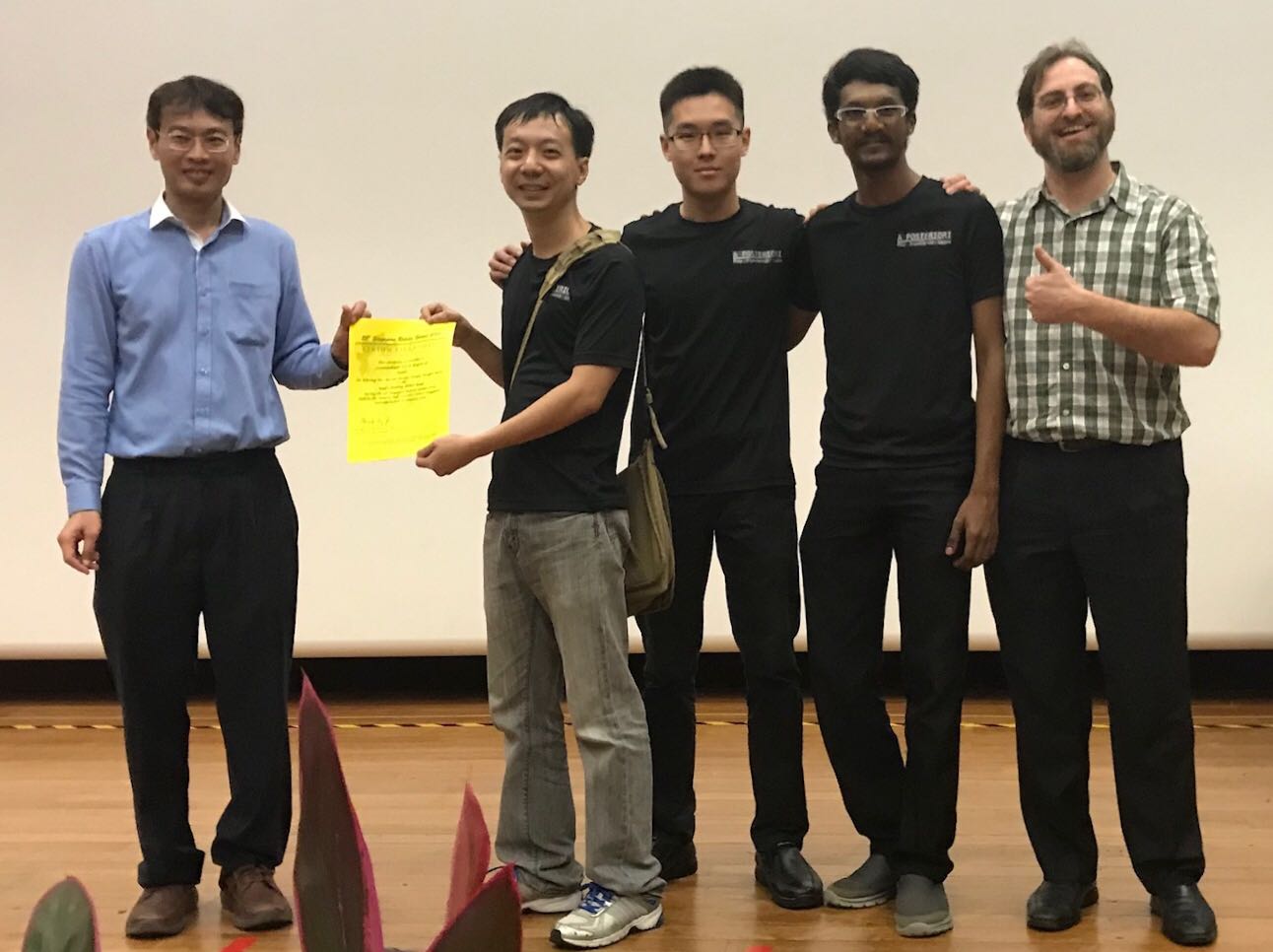We built and tested our Chihuahua (small, but loud) wall climbing robot in two weeks, or so. It was a fun process where none of us got electrocuted, despite losing magic smoke from various MOSFETs and diodes. We also didn’t lose any of our 10 fingers in the high-speed ducted fans, despite cutting through and splintering several propellers.
So, that’s a marked success.
Here’s a video of us testing a full run at home – the surfaces are all wrong, and the dimensions are much shorter than the real event:
With that fine working machine in the bag, and less than 24 hours to go, we decided to add more Time-of-Flight light distance sensors and a whole bunch of code, in order to be able to perform some alignment correction on the controlled fall back down. That seemed to have introduced unexpected I2C complexities, which we spent a lot of our day-of-competition practice time trying to understand and overcome.
Here’s one of our better practice performances:
By the time we had to cage our robot, we had some vague hopes that one of several runs might luck through the full challenge… Unfortunately, our little Chihuahua had stage fright in front of an expectant audience, which turned into a full meltdown, when one of its unprotected wires shorted and a billow of smoke erupted climactically from the belly of the beast.
Oh well! We did impress some people with our thrust-based design, and collected our Unique Design Special Award ceremoniously at the end of the event.
We plan to be back next year with another unique design in at least one challenge… Kudos to Singapore Robotics Games organizers for all their hard work and dedication to the open and free competition.



Cool project!
ETH solved the transition problem by thrust vectoring (https://www.dezeen.com/2016/01/04/disney-research-zurich-eth-vertigo-robot-propellers-climb-up-walls-scale-vertical-surfaces/) but probably a simpler solution in your application could be to mount the drive motors on the top of the plate rather than the bottom, and adding a compliant skirting around the perimeter of the plate to restrict airflow and create a low pressure region under the chassis to harness suction.
Thanks Kenneth.
Suction will allow us to use far less power, but we didn’t want to do that as it won’t work during the wall-to-ceiling transition. We could use a separate suction fan for the ceiling, and many other participants do that, but we figured it won’t be cool to do it the same way as everyone else.
We saw the thrust vectoring approach by ETH, and one of our ideas at the start was to take the approach to it’s logical conclusion; by building a quadcopter that glides along the floor, wall, and ceiling while maintaining contact at all time to stay within the rules. Won’t even need wheels for that… but we figured that won’t be cool either.